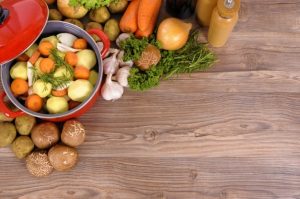
Baking Perfect Bread, Cookies, and Desserts
We all search for the perfect cake or cookie or loaf of bread. It doesn’t always happen. In our experience, there are four reasons for most imperfect products.
For baking or gratin. That has to be nemesis number one. Bread is often underbaked, and cookies usually bake too long. Baked bread is soft. Crispbread will never get crisp unless the temperature is high enough to remove moisture from the dough. Baked cookies are dry and hard. Try baking cookies until they start to turn brown and see if you don’t like them anymore.
Most soft bread should reach an internal temperature of 190 degrees, and the crispest bread should reach a temperature of 200-210 degrees. A thermometer is a baker’s best friend.
To achieve those internal temperatures, the crusts are usually darker than you often imagine in a perfect bread. If you want a golden crust on your bread instead of a rich brown crust, try covering the bread with aluminium foil for the last six to eight minutes of baking. The aluminium foil deflects heat and protects the crust from getting too dark.
Don’t let it get high enough. And speaking of the bread… If you like fluffy bread, let it rise. The tendency is to put it in the oven too early. With a little practice, you will quickly learn to recognise the bread that has risen to the maximum. It feels soft and even looks puffy. Ideally, catch it a bit before it bubbles. (Remember, you can get some oven pens even in a hot oven.) If you wait too long and the bread starts to bubble, all is not lost. Chop it, reform the bread and make it rise again. (Sometimes, if a single bubble appears and you are in a hurry, you can pierce the bubble with a sharp knife and put the loaf in the oven.)
Wrong mix. We don’t mix bread long enough; We mix cookies, muffins, and pancakes too long. The mixture will develop gluten. It is gluten that gives bread elasticity and toughness. We want products acidified with baking soda or baking soda to be tender and flaky. Mix dry ingredients to distribute evenly, then mix dry mix with wet ingredients until well blended, but nothing else. Overmixed sourdough products are tough and soggy.
Incorrect measurement. We suspect that ingredients are often measured incorrectly. With many good recipes, there is some room for error, but even with good recipes, the product will be better if the ingredient proportions are correct. Measure liquids in clear liquid containers at eye level. Use measuring cups that you trust are correct. (We recently compared four brand name measuring cups. One was a full scoop in a side cup.)
We always weigh the flour when we bake. A packed cup of flour can easily weigh 20% more than a slightly full cup. (Most recipes are based on slightly filled cups.) If you’re just starting to convert your recipes from volume to weight, start with 4.5 ounces of flour for every cup. Use the same flour for the same type of product as much as possible. Different flours have different densities, and different flours can have very different effects on a recipe. When you weigh your flour and record your results, you can perfect your favourite recipe.
Now you know. These are the archenemies who cause the most trouble in the kitchen. By knowing what the most common pitfalls in the kitchen are, you will become a better baker. As you perfect your craft in these four areas, you will be able to make wonderful baked goods.







